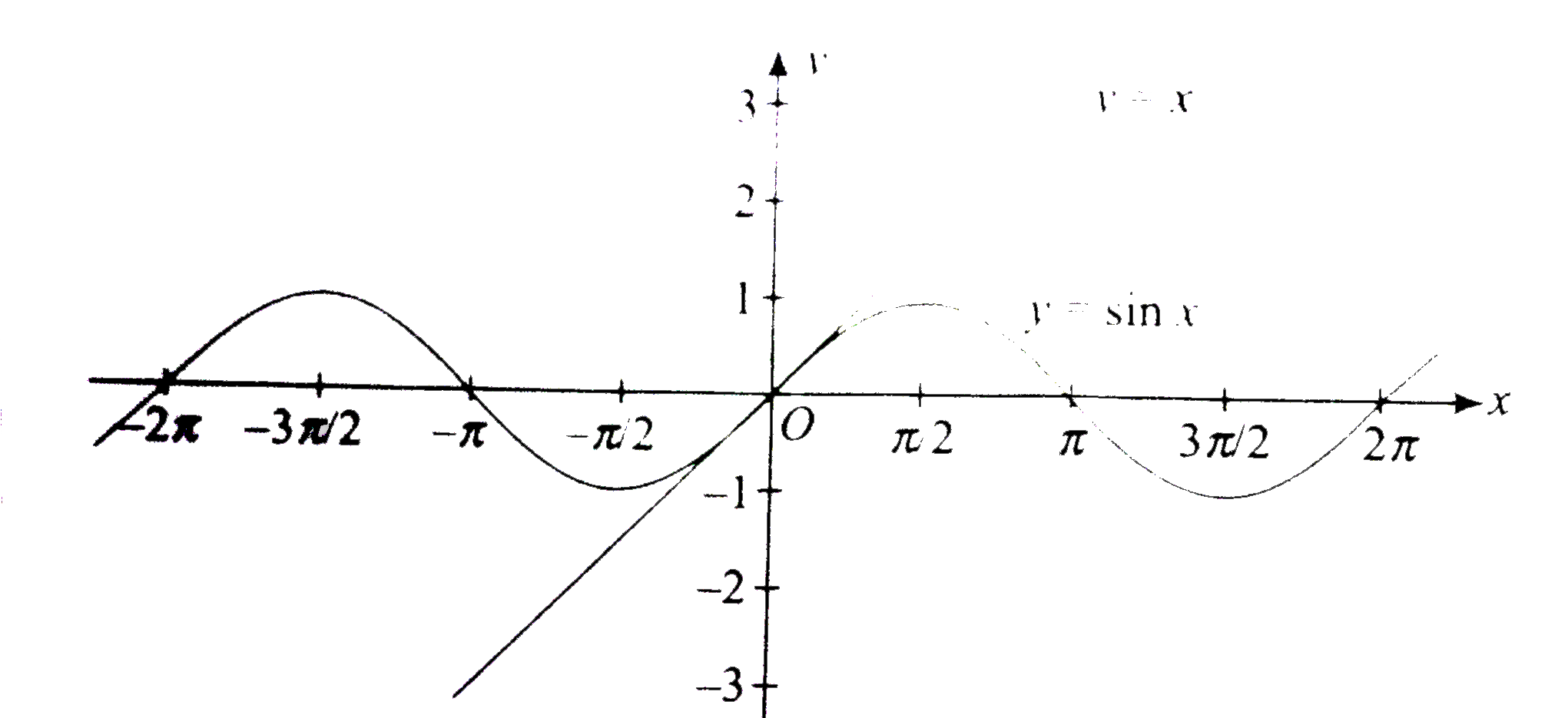Prove that [limx→0sinxx]=0, where [.] represents the greatest integer function.
Video Solution
Text Solution
See the graphs of y=x and sinx in the following figure.

From the figure when x→0+,graph of y=x is above the graph of y=sinx
i.e., sinx<x or sinxx<1
⇒ limx→0+sinxx=11−
⇒ [limx→0+sinxx]=0
When x→0−, graph of y=x is below the graph of y=sinx
i.e., sinx<x or sinxx<1 (as x is negative)
⇒ limx→0−sinxx=1−
⇒ [limx→0−sinxx]=0
Thus, [limx→0−sinxx]=0
|
Topper's Solved these Questions
- LIMITSBOOK - CENGAGECHAPTER - LIMITSEXERCISE - Exercise 2.1
10 Videos
- LIMITSBOOK - CENGAGECHAPTER - LIMITSEXERCISE - Exercise 2.2
7 Videos
- JEE 2019BOOK - CENGAGECHAPTER - JEE 2019EXERCISE - Chapter 10
9 Videos
- LINEAR COMBINATION OF VECTORS, DEPENDENT AND INDEPENDENT VECTORSBOOK - CENGAGECHAPTER - LINEAR COMBINATION OF VECTORS, DEPENDENT AND INDEPENDENT VECTORSEXERCISE - DPP 1.2
10 Videos
Similar Questions
Knowledge Check
limx→0[(1−ex)sinx|x|] is (where [.] represents the greatest integer function )
A1B2C3Dnone of theseThe value of limx→0[xsinx] , where [.] represents the greatest integer function,is
A1B0C-1Dnone of these
Evaluate: (lim)x→0sinxx,where[.] represents the greatest integer function.
View SolutionProve that [limx→0sinx.tanxx2]=1,where [.] represents greatest integer function.
View SolutionProve that limx→2[x] does not exists, where [.] represents the greatest integer function.
View SolutionSolve limx→0[sin|x||x|], where [.] denotes greatest integer function.
View SolutionEvaluate: (lim)x→0tanxx where [.] represents the greatest integer function
View Solutionlimx→0e[|sinx|][x+1] is , where [.] denotes the greatest integer function.
View Solution
